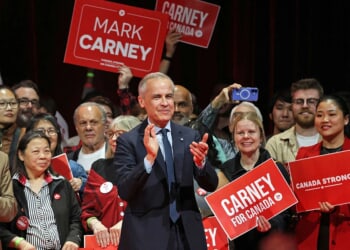
The U.S. job market outperformed expectations again in April, with employers adding 177,000 jobs — a figure that exceeded analysts’ projections of 135,000, according to new federal labor data released Friday.
The unemployment rate remained unchanged at 4.2%, providing some relief to economists and market analysts who had expressed concerns that rising tariffs and recent federal workforce reductions might negatively impact employment.
In April, the U.S. economy added 177,000 jobs, including:
➡️ Over 70,000 private education and health services jobs
➡️Over 29,000 transportation and warehousing jobs
➡️Over 24,000 leisure and hospitality jobs
➡️Over 14,000 finance jobsPresident Trump is delivering for… pic.twitter.com/lyhjFQUwuQ
— GOP (@GOP) May 2, 2025
Trump’s Sovereign Wealth Fund: What Could It Mean For Your Money?
This marks the second consecutive month of stronger-than-expected job growth.
This Could Be the Most Important Video Gun Owners Watch All Year
In March, U.S. employers added 228,000 jobs, surpassing earlier forecasts and demonstrating continued resilience in the labor market.
Following the release of the April jobs data at 8:30 a.m. ET, U.S. stock index futures moved sharply higher.
Dow Jones futures rose 299 points, or 0.73%, S&P 500 futures gained 42.25 points, or 0.75%, and Nasdaq futures climbed 139.5 points, or 0.70%.
The better-than-expected jobs report helped ease investor anxiety over recent trade disputes and large-scale cuts to federal employment, which some economists had warned could cause broader labor market instability.
Although April’s data signals continued strength in the labor market, some analysts cautioned that the trend may not last.
Robert Frick, corporate economist at Navy Federal Credit Union, told CNN that the second half of the year could bring more challenges.
“Let’s not fool ourselves, things are going to get worse later this year, probably later in the summer,” Frick said, suggesting that future job numbers may decline due to ongoing economic pressures, including the lingering effects of global trade tensions and federal spending cuts.
Despite those concerns, the latest employment figures have given Wall Street a boost and injected new confidence into the broader outlook for the U.S. economy, which has remained resilient amid shifting fiscal and trade policies.
While job creation has remained positive, the long-term impact of tariffs, federal workforce reductions, and global economic uncertainty will continue to shape projections for the remainder of 2025.
Market analysts will now shift their focus to upcoming economic indicators, including wage growth, consumer spending, and inflation, to determine whether the current momentum can be sustained or whether a slowdown is on the horizon.
Washington elites watched as our jobs were shipped overseas and our heartland was gutted.
President Trump ran on bringing back American jobs and manufacturing—and that’s exactly what he’s doing. pic.twitter.com/5mN0pwc1ks
— Congressman Brandon Gill (@RepBrandonGill) May 3, 2025
Connect with Vetted Off-Duty Cops to Instantly Fulfill Your Security Needs

![New Jobs Report Defies Media's Doomsday Predictions, Wall Street Cheers [WATCH]](https://www.right2024.com/wp-content/uploads/2025/05/New-Jobs-Report-Defies-Medias-Doomsday-Predictions-Wall-Street-Cheers-750x375.jpg)


![‘It’s a Recipe for a Hundred Years of National Dominance’: Stephen Miller [WATCH]](https://www.right2024.com/wp-content/uploads/2025/05/Stephen-Miller-Completely-Obliterates-CNN-Host-Over-Her-Illegal-Immigration-350x250.jpg)
![Trump Posts Hilarious Pope Meme, Leftists Immediately Melt Down [WATCH]](https://www.right2024.com/wp-content/uploads/2025/05/Trump-Posts-Hilarious-Pope-Meme-Leftists-Immediately-Melt-Down-WATCH-350x250.jpg)



![Mother Breaks Silence After Three Daughters Killed During Father’s Custody Visit, Memorial Held [WATCH]](https://www.right2024.com/wp-content/uploads/2025/06/Mother-Breaks-Silence-After-Three-Daughters-Killed-During-Fathers-Custody-350x250.jpg)







